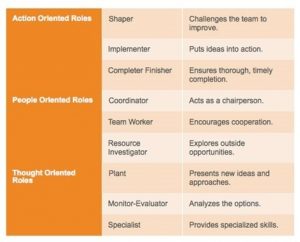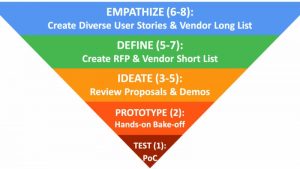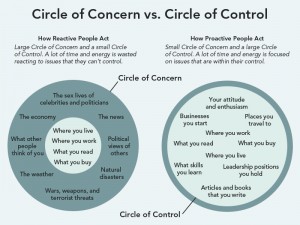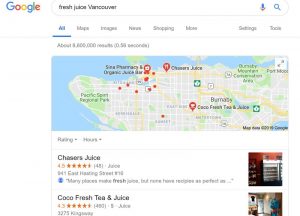Creating a video marketing strategy is one of those topics that can be intimidating to even start writing about – let alone actually developing one for your company and bringing it to fruition. In this first blog post, we will look at how you can set the foundations for your strategy. We will explore how to identify your brand’s voice and how you can use it to build your brand’s story and increase brand awareness.
In the coming weeks, we will also be looking at the next steps when creating an online video strategy. These include
- Step 2. – Video creation & SEO
- Step 3. – Distribution & Ads
- Step 4 – Measuring Success
I’m keeping this post relatively short. I want to present guidelines to think about, rather than delving deep into every point raised. I believe the first and most important aspect is to break down the process into small steps. By doing this, we can develop thoughts and ideas without feeling overwhelmed.
Below, are some topics that should help get the creative juices flowing and give more of an insight into how to begin creating your online video marketing strategy.
What’s the aim of the strategy?

Startup Stock Photos
This may seem like a straightforward question. Nonetheless, by discussing and exploring it, you are in fact putting in place the cornerstone of the entire strategy. Without setting clear goals and targets, your strategy will quickly become muddled and confused. You may be thinking “How do I even start setting goals and targets when I don’t even know what I want to create?” Well, there are certain pointers which can help you add some meat to the bone when trying to decide exactly what you want to achieve from your strategy. Have a think about the following questions:
- Who are my customers?
- What are their interests?
- Why do they buy my products or services?
- Do I want to build brand awareness, increase site traffic & sales, engagement with customers, etc?
- How will I create my videos?
- What is my budget?
- Where will I host my videos?
- How will I measure success?
These are just some questions you can start asking yourself and begin to flesh out in your own time. You may surprise yourself with how you and your team interpret these questions and the discussions that they spark. What makes a successful video strategy is listening to your audience, customers and fans. You need a clear understanding of their wants and needs. You can then begin to develop content that they will want to view, will actively search out and most importantly engage with and share.
1. Building Your Brand’s Voice.
At first, building brand awareness and creating on-line videos may seem intimidating and expensive. The biggest challenge facing you today is actually taking the first steps and implementing a video creation strategy for your business.
Perhaps, in the past, you may have found it difficult to get your message across to customers or had difficulty finding a true voice for your brand. A great place to start is to understand what your company values are and how you want your customers to perceive you. A first step could be to examine your company’s Mission Statement. These are the core values of every business and the reasons you created the company in the first place.
“The mission statement should guide the actions of the organization, spell out its overall goal, provide a path, and guide decision-making. It provides “the framework or context within which the company’s strategies are formulated.”
Another easy way to begin narrowing in on your brand’s voice is to create a simple “elevator pitch” for you and your team. An elevator pitch is a quick pitch about your company which can be given to anyone in 15 – 30 secs. It’s really what you want your audience to know about your product or company, told short and sweet in a way that will fit in a Twitter-style format.
2. Who Are Your Customers?
This question is more difficult to answer than one may think. Some brands lend themselves well for brand definition especially around gender, age, social status, etc. An example of this may be high-end fashion or luxury car brands like Versace or Bentley.
On the other hand, you may be a new business and selling a new product. You may not have the systems in place right now to get to grips with who your customers are. When you think about your customers, you may have some preconceived ideas of who you think they are. Nonetheless, once you begin selling your product this can change dramatically or a new group may become more relevant.
An easy way to help figure out your audience is to create a simple on-line survey. Creating a brand awareness or customer satisfaction survey is a great way to help understand who exactly your customers are and what they like and dislike about you, your business and your brand.
However, for your survey to be successful it is important that you ask the right questions. It is crucial to plan out your survey so you know what information you want to extract from your customers. We recommend asking at most 10 questions. Make sure they are concise and to the point. Focus on the key areas that drives brand awareness and customer satisfaction such as value, quality, customer experience and support.
3. Brand Storytelling
Once you have identified who your audience is and your company’s core values, you can begin to understand how you can talk to them and the language to use. Brand Storytelling is a buzzword that has become popular lately. What it really means is bringing a human context and emotion to how you do business and interact with your customers.
“All aspects of content marketing allow companies to interact and engage with its customers.”
There are tons of small businesses who are excelling at video content marketing and brand storytelling. Below I have highlighted a couple of companies that are using online video their core tool to communicate and interact with their customers. For example, Threadless (a t-shirt company) and Ideapaint (a paint that acts like a whiteboard) have really embraced online video and are using it to help them grow their business rapidly.
Threadless – Building a community through video.
Threadless is a t-shirt printing company / community that allows anyone to send in t-shirt designs which can be voted on and sold online. They have spent a huge amount of time developing their creative community and are using video to achieve this. You just have to head over to their blog or YouTube channel to see how seriously they are taking video creation.
How exactly have they used video as a marketing tool? Well, firstly they have created a community series called “Artist Stories”. These are short video features on members of their community that have contributed their original designs to the site. These type of videos can really build on the community spirit and lead to a major increase in customer engagement and brand loyalty.
They also created and posted super quick videos on YouTube to highlight new collections, sales and promotions and day-to-day company information. All the emphasis is on building human relationships with their customers.
Ideapaint – Targeting your customers
Ideapaint have developed a video strategy to target creative businesses and schools as potential customers of their product. They have created a number of feature videos demonstrating how their current customers are using Ideapaint in specific workspaces. This is a great way to showcase the product in use, as well as building confidence with potential clients. They have also created a number of how-to and installation videos. These videos help users quickly learn about the set-up process and reduces the need for customer support and elaborate, time-consuming help manuals.
4. Language & Tone
As you can see from the examples of above, the language and tone you use while telling your story is vital.
“Be yourself and tell stories from your perspective. Tell stories from your employees’ points of view or from a third-person point of view. The important thing is to create a persona that enables your audience to become emotionally connected to…”
For some people, a friendly relaxed tone may come naturally but this is not the case for everybody. When placed in front of a camera lens, people can become uptight, stressed and lose focus. Below are some points that when practised may help anyone develop a more relaxed, friendlier tone when speaking in front of a camera and to your perspective audience.
- Find, observe and analyse videos that have a friendly tone and ones that you can connect and relate to. What works well? Why did you like about it?
- Record yourself speaking from a script, book or magazine. Be as natural as possible. Use a phone, PC or tape record. Listen back and evaluate.
- Watch yourself speak. Use a webcam, phone or camcorder. Does your body language indicate that you’re friendly or closed and unwelcoming?
- Identify areas for improvement. Be objective and critical. Would you buy from this person? Do you need to inject more energy into your delivery?
- Look out for common issues. Are you smiling? Are you relaxed or talking to quickly? How’s your volume? Are you pausing between gaps in your sentences?
- The language and words you use can help with the overall tone of your voice. Use polite, thoughtful, caring words and a natural friendlier tone will come easy.
I hope you find this post useful and please feel free to drop a line in the comment section if you have any question, queries or feedback.
This post first appeared on the trakax.com blog.
Digital & Social Articles on Business 2 Community(117)
Report Post








